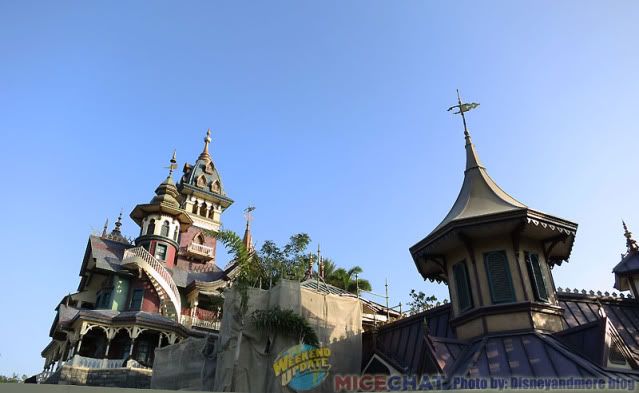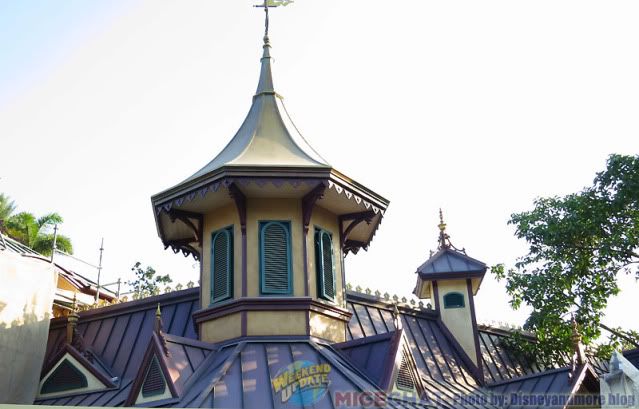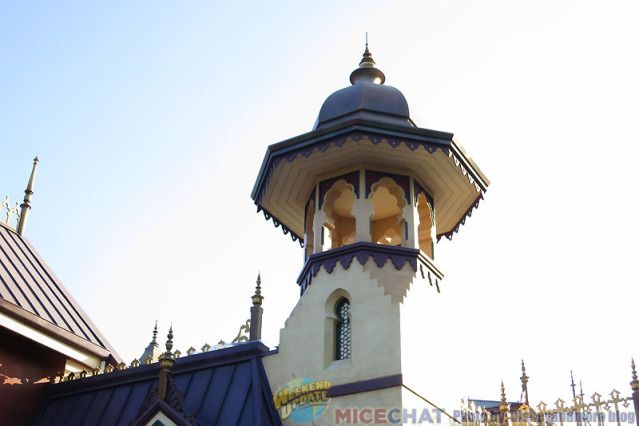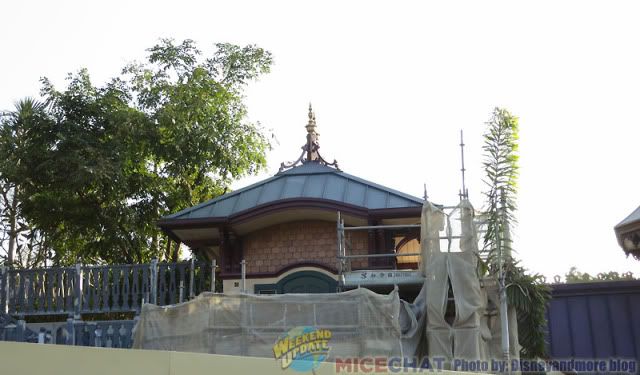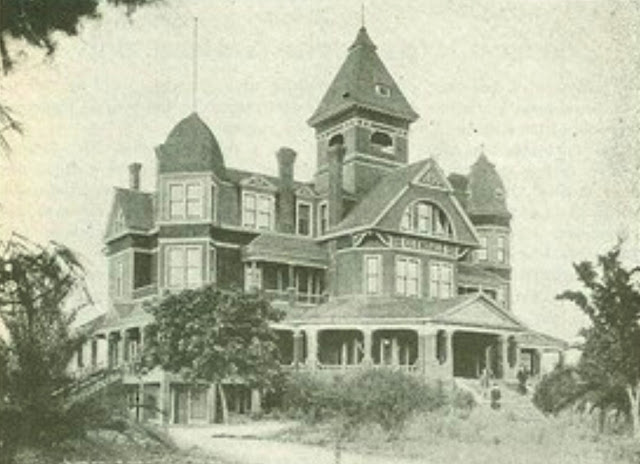Have you ever gazed upon an example of amazing Disney architecture and wondered where the inspiration came from for the Imagineers who created it? Today we’re lucky to hear the story and see actual photos of the building that was the inspiration for Hong Kong Disneyland’s soon to open Mystic Manor E-Ticket attraction. Before we take a tour of this amazing building, MiceChat contributor, Alain Littaye, treats us to new exterior photos of Mystic Manor. ~~Rick
THE AMAZING BACK STORY OF HONG KONG DISNEYLAND’S MYSTIC MANOR
Alain Littaye – Disney and more blog
I’ve got a great Mystic Manor pictorial update for you today with these brand new pictures showing the exterior of the Manor – now totally finished – as well as the buildings nearby. HKDL Imagineers are now working on the interiors and the ride system. Mystic Manor is scheduled to open summer 2013.
The building in the next pictures will be a merchandise shop and the ride exit.
Some closer shots of architectural elements of this building.
Mystic Manor – especially the main building – has quite a unique architecture. But where did Walt Disney Imagineering take their inspiration for this building? Here’s the amazing back story…
As you may know, the Walt Disney Imagineering offices are in Glendale, California. Believe it or not, the building that inspired the Mystic Manor design was a “Sanitarium” of early last century located… in Glendale!
If you look at the Mystic Manor pictures below, you’ll see clearly the architectural elements that WDI Imagineers retained from the 19th century Victorian mansion. Then they added the exterior staircase and turrets with a different style so that the final building would show the personality of world adventurer and art collector Lord Mystic, the owner of the manor (in the backstory).
Glendale Sanitarium was originally built to be a hotel. The Glendale Hotel, a 75-room Victorian structure on what is now Broadway Avenue, never opened! You can see the hotel in this rare photo taken before the building was bought and transformed in a sanitarium. Note the entrance located on the ground floor in the center. You can see it had two staircases. This would be transformed later when the hotel became the sanitarium with only one staircase and entrance.
More details are in this excerpt of a Los Angeles Times article by Sam Watters:
In 1886, early developers hired boomtown architects Samuel and Joseph C. Newsom to build the Glendale Hotel along what is now Broadway. It was in a field acquired after the California courts settled ownership of the vast San Rafael and La Cañada ranchos in favor of land-maneuvering gringos.As it turned out, the hotel never opened, a casualty of another recession. First it was a school and then an investment for Glendale city father Leslie Brand, who had bought the building by late 1904. A good Angeleno, he flipped the property a year later. The buyer was a health pioneer, the Battle Creek Sanitarium. Before our present-day insurance plans and government-backed medical programs, working-class Americans lived Catch-22 lives. When they got sick, they couldn’t earn money to pay for care. Without care, they couldn’t get better to return to their jobs. Workers depended on relatives, churches, charities and no-charge hospitals, which stumbled when tuberculosis, asthma and cholera afflicted industrial cities…. Into this impoverished world came the church of Seventh-day Adventists. Formally founded in 1863, the organization linked spiritual health to physical well-being. It advocated a holistic life available to people who couldn’t afford to be sick…
In 1866, it opened the Battle Creek Sanitarium in Battle Creek, Mich. A decade later, John Harvey Kellogg, a doctor, became its superintendent. For paying customers, he instituted a program that included rigorous exercise and mealtime walks to improve digestion, classes on food preparation and sessions with a diabolic enema machine that pumped gallons of water in minutes. Among his curious obsessions was cereal. At a time when the rich dined on eggs and meat at breakfast as their servants chowed down on gruel, Kellogg promoted cornflakes that he and his brother Will manufactured. Their Battle Creek Toasted Corn Flake Co. launched Kellogg’s, which is still based in Battle Creek.SoCal was to healthcare what NorCal is to technology. Single-owner guest houses, tent cities and full-service hotel-sanitariums offered services at varying prices in a “sanatorium belt” that stretched from Los Angeles to San Diego. Through railroad publicity and business opportunities developed by chambers of commerce, the Southland encouraged cashing in on health. That is what Battle Creek did when it picked up the Glendale Hotel in 1905.It was no accident that the Newsom brothers’ Queen Anne-style extravaganza suited Battle Creek’s health-through-good living program. Hotel architecture offers a welcoming home away from home, and the Glendale Hotel was a model American mansion. It had three stories with 75 spacious rooms and a broad, shaded veranda overlooking the Verdugo Mountains.The Glendale Sanitarium prospered with California’s growth after World War I. To meet demand, management added rooms and services. It offered health regimens to the sick and hotel amenities to tourists and community groups.
A century ago, as L.A. columnist Sam Watters reminds us, Southern California was to health what Silicon Valley is to high tech today. And although the Glendale Sanitarium was not an asylum, it served both mental and depressed patients. Some war victims went there too, as well as people recovering from long bouts of depression.
Discover the great HKDL Wallpapers HD App for iPhone, iPad or iPod Touch!




